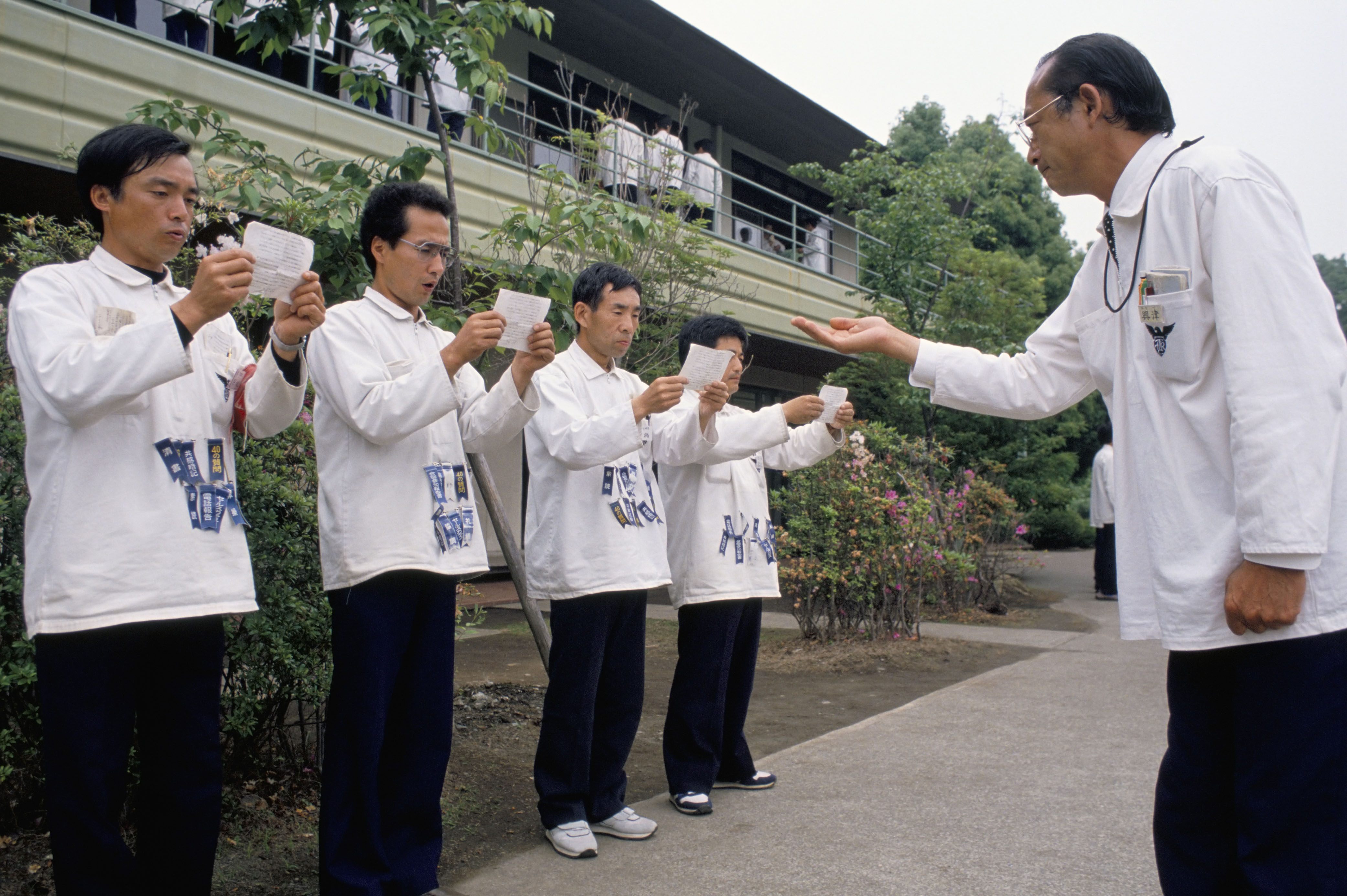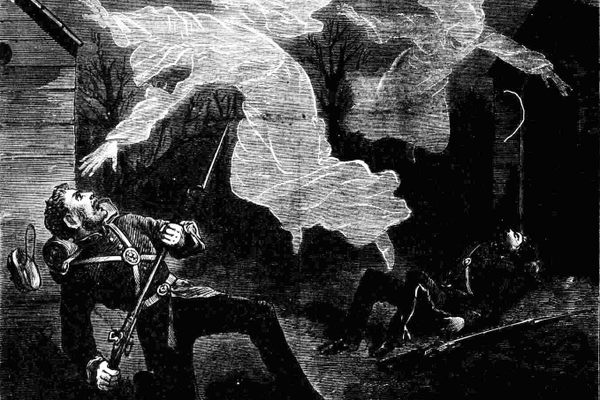The Intense Corporate ‘Hell Camps’ of 1980s Japan
They involved night hikes, forced public singing, and “ribbons of shame.”

Japan’s “bubble economy” was riding high in the 1980s. The United States could only watch with a mixture of dread and indignation as Japan Inc. snapped up prime real estate such as California’s Pebble Beach golf course, Hollywood studios and even New York’s Rockefeller Center.
Japan had it all, except, it seemed, tolerance for those middle managers among its ranks seen as hindering the Japanese economic miracle. But a solution was at hand. For managers perceived as soft, indolent or otherwise incompetent, and would-be junior executives not quite ready for prime-time, the answer was a ticket to jigoku no kunren: Hell Camp.
Far from the trust-building exercises and fun runs of modern corporate retreats, Japan’s executive hell camps were run with the discipline and intensity of military basic training. The goal was to whip into shape underperforming middle-management types, as well as giving them the assertiveness the Japanese felt they lacked in dealing with Western competitors.
At Kanrisha Yosei Gakko (KYG), the best-known hell camp of the 1970s and ‘80s, rules of the 13-day course were strict. Days began at 4:15 a.m. and lasted well into the evening. Radios and visitors were prohibited; candidates were expected to focus entirely on the mission at hand. When questioned by instructors, students’ answers were expected to be quick, and above all, loud.
Perhaps the defining feature of the course at KYG—which cost approximately $4,300 in 2017 dollars—were the ribbons of shame that were pinned onto each candidate upon arrival. The ribbons, 14 in total, corresponded with a particular task or shortcoming that had to be conquered in order to graduate from the program. Confidence; company pride; penmanship and report-writing; team building; and public speaking were just some of the areas in which managers needed to prove themselves. To complete the final challenge, participants had to individually belt out—in public in front of Fujinomiya Station—the school’s “Sales Crow” song as proof of overcoming feelings of self-consciousness in public speaking.
Failing the course often meant the end of one’s climb up the corporate ladder. In its first nine years, however, over 150,000 candidates graduated from KYG’s program and today the school boasts over 300,000 graduates across the country.
The unusual nature of the hell camps inevitably drew attention from overseas. News media flocked in for interviews. The 1986 Ron Howard film Gung Ho, about a Japanese car company buying an American auto plant, featured elements of hell-camp training and introduced the ribbons of shame concept to a wider audience. An alternatively fascinated and perplexed Diane Sawyer ran a segment on KYG’s hell-camp program for 60 Minutes in 1987. As an anxious America watched the seemingly inexorable march of Japan’s economy, hell camps only added to the worry.
Perhaps not surprisingly, then, the KYG brand of hell camp was eventually franchised for use in the United States in the late ‘80s. At a facility in Malibu, the strict training regimen was much the same as its Japanese counterpart, with a few tweaks to match American sensibilities, and a heftier price tag—$5,300 per person—to match. Days began at 5 a.m., for instance, and ribbons of shame were rebranded as “ribbons of challenge.” Candidates were, however, still required to perform such tasks as 25-mile night hikes and the dreaded Sales Crow singing challenge—trundling off to a nearby shopping mall parking lot to sing before bemused crowds.
Today, the venerable Kanrisha Yosei Gakko still operates at the foot of Mt. Fuji as it has since 1979, offering a range of programs for middle management, junior employees and recent university graduates. Changing economic fortunes and a modern business climate, however, have largely seen other camps fall by the wayside. While KYG persists, Japan’s hell camps—and their ribbons of shame—are a quaint reminder of the economic boom years of the 1980s.


















Follow us on Twitter to get the latest on the world's hidden wonders.
Like us on Facebook to get the latest on the world's hidden wonders.
Follow us on Twitter Like us on Facebook